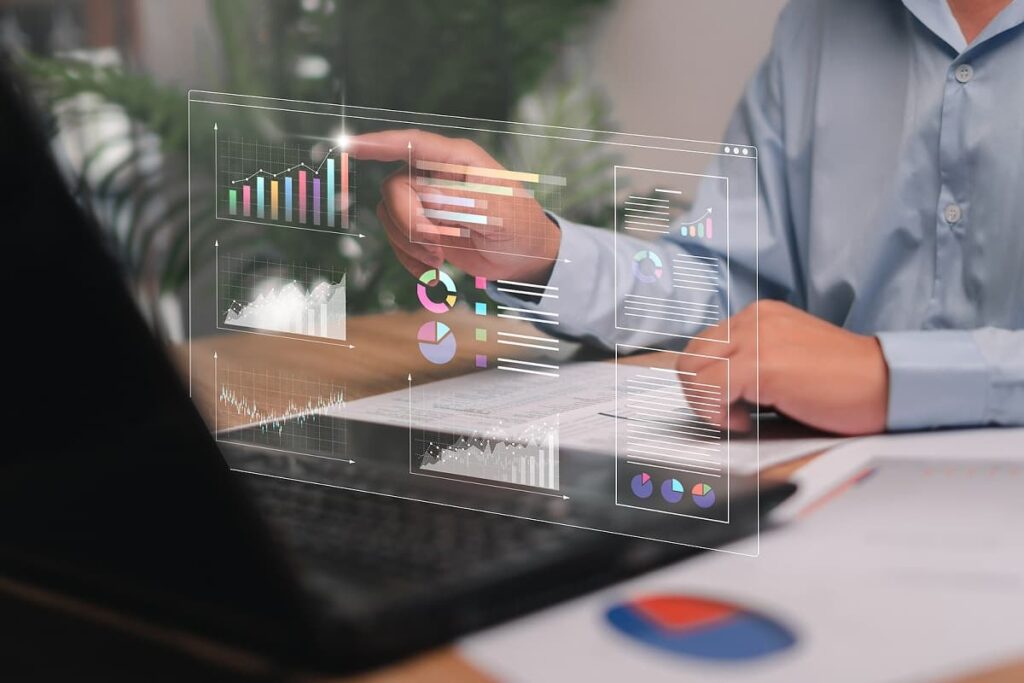Alternative Data for Predicting Geopolitical Risk
Table of contents

A machine learning algorithm is only as good as the data you use to train it with. That’s why any company that has a large proprietary data set can now start to extract exclusive insights from it, something that in the olden days we used to call “data mining.” Nowadays, it’s all about trying to predict the future using something called “predictive analytics.” Nowhere is the need to predict the future more lucrative than in the world of finance. That’s because there are financial products – like options – that can be used to place highly leveraged bets on particular outcomes. This has led to an increasing availability of obscure data sets that are commonly referred to as “alternative data.”
Alternative Data for Geopolitical Risk
Consumer footfall and transaction data, app downloads and usage, national job listings, vessel tracking, and satellite images of metal ingots are all alternative data sets that can contain signals that help predict the future. Hedge funds are even tracking the movement of private jets in order to try and predict what the rainmakers of the world are going to do next. The demand for alternative data hasn’t gone unnoticed by large firms like Bloomberg which announced they’ll move into the alternative data space as a distributor, or Nasdaq which acquired Quandl – an aggregator of alternative data – late last year. Today, we’re going to look at some firms that are producing alternative data for “geopolitical risk.”
Also known simply as political risk, geopolitical risk is pretty much what it says on the tin – risk that stems from change resulting from the government. Per Investopedia, this could be “taxes, spending, regulation, currency valuation, trade tariffs, labor laws such as the minimum wage, and environmental regulations.” The word “geopolitical” implies a broader focus on international relations as opposed to just what the Americans happen to be squabbling about at the moment.
Up until now, political risk consultancies like Eurasia Group and Oxford Analytica have provided guidance at a strategic level for firms looking to manage political risk. Today, there’s a move towards using machine learning techniques like “natural language processing” to scour the world’s information and quantify geopolitical risk at a much more tactical level. One such firm is Geoquant.
Geoquant

The paper goes on to talk about how political risk used to be too idiosyncratic to define until Geoquant developed the world’s first benchmark measures for political risk using both structured and unstructured data. Structured data comes in the form of 250 variables drawn from “credible country-level databases maintained by multilateral institutions, NGOs, governments, social scientists, and the like,” with historical data going back to 2009. Since these data points are updated infrequently – annually or quarterly – Geoquant uses high-frequency unstructured data to give their models some responsiveness. This data is “drawn from high-quality traditional and social media sources” using natural language processing algorithms.
Since going live in June 2016, the system has been used “to forecast most major political events in the G20 with remarkable accuracy,” says the company. For example, here’s a chart which shows how the Turkish coup was anticipated by the model.

There are plenty of other examples given in the white paper which also does a good job of defining the limitations of geopolitical risk models. In other words, this stuff is really complicated and until we figure out how to use quantum computers to time travel, we’re never going to truly predict the future. What might help the predictive power of geopolitical risk – if not make it a bit more confusing – is to throw another magic eight ball into the mix. A firm called Predata is also predicting geopolitical risk, they’re just doing it a bit differently.
Update 11/15/2019: GeoQuant has raised $4.5 million in Series A funding to accelerate growth and development of the first high-frequency political risk data set with demonstrated market relevance. This brings the company’s total funding to $8.5 million to date.
Predata
Founded in 2015, New Yawk startup Predata has taken in $3.3 million in funding to develop a platform that uses machine learning algorithms to “condense data sources from around the web into clear and unified signals for geopolitical risk.” Similar to Geoquant, Predata attempts to quantify political risk in an increasingly connected world with many moving parts. The difference is explained in a recent article by the Global Association of Risk Professionals:
“We don’t employ natural language processing or key word analysis,” Dawani explains. “We purely look at sources curated by our expert analysts on serious topics and employ machine learning technologies to identify patterns of behavior.” The software performs in any language – it is language-agnostic; can customize queries, posing a broad range of questions; and covers 180 countries.
The end result is a tool that allows you to track geopolitical risk over time and across various countries and regions.

In March of this year, Predata’s geopolitical risk signals were made available to Bloomberg clients including a daily index of political volatility for 125 countries called the Predata Political Volatility Index (PVIX). Just last month, the firm released a dedicated offering for U.S. equities which will examine sector-level and company level risks. Some examples given by the company include:
- The swine fever epidemic in China & how the rise of this crisis into the public eye had a divergent effect on meat processing companies with and without Chinese ties
- How heightened research into crop insurance underlies the economic situation of US farmers in light of trade war tariffs, and the consequences of reduced CapEx spend on companies in that space
- Anomalous spikes of non-English language attention to a Tesla supplier, which provided early warning that something may be amiss ahead of an official recall announcement
This is the sort of thing that an equity portfolio manager might find useful. Speaking of equity portfolio managers, the world’s largest money manager, BlackRock (BLK), has also developed an in-house tool for monitoring geopolitical risk.
BlackRock’s Geopolitical Risk Dashboard
As of June 30, 2019, BlackRock’s Assets Under Management (AUM) total $6.84 trillion across equity, fixed income, cash management, alternative investment, real estate, and advisory strategies. When you’re managing that much money, there’s an expectation from your clients that every conceivable tool is made available to your portfolio managers so that they can make better investment decisions. It’s no surprise to see that BlackRock has built their own geopolitical risk signalling tool. Below, you can see a global index of political risk – not surprisingly at an all-time high – and also the top-10 geopolitical risks according to BlackRock.

In the fine print, BlackRock talks about the methodology used to produce these charts which is similar to the other firms we’ve discussed:
We identify specific words related to geopolitical risk in general and to our top-10 risks. We then use text analysis to calculate the frequency of their appearance in the Refinitiv Broker Report and Dow Jones Global Newswire databases as well as on Twitter. We then adjust for whether the language reflects positive or negative sentiment, and assign a score.
Looks like all the armchair CEOs on Twitter are actually being listened to by somebody. The whole thing appears to be a work in progress as BlackRock goes on to say:
We recently improved the methodology of our global BGRI, tying it closely to our other risks and updating the keywords. The chart may look different from previous updates as a result.
Making adjustments to the methodology can be expected as BlackRock looks to refine the BlackRock Geopolitical Risk Dashboard (BGRD) which was first launched just over a year ago. While the dashboard sure looks slick, that’s not where the real value lies.
Where’s the Money?
You may be thinking to yourself, if BlackRock makes all this information available on their website, then how can startups like Predata and Geoquant make money selling pretty much the same information? The answer lies in how the data is made available. This isn’t about some financial adviser who rides the train to work showing some geopolitical risk charts to his client who gets driven to work in a Maybach. That’s not where the value is. In order to generate alpha with this information, it needs to be plugged into extremely sophisticated trading strategies – many now powered by machine learning algorithms – and that requires the data to be made available in real-time via an Application Programming Interface (API). That way, trading strategies can take action within microseconds of a data point changing. In order to get access to this data in real-time, you’ll need to pay for it.
Conclusion
At the beginning of this article, we talked about the value of data sets that companies have exclusive access to. This raises an obvious question about the increasing prevalence of alternative data. How much less valuable does an alternative data set become when a firm decides to distribute it to the masses through platforms like Bloomberg? In our past conversations with alternative data creator RavenPack, they spoke about how making the data available to everyone just increases the number of ways in which it can be used – something they referred to as “alternative data democratization.” Machine learning algorithms are now a commodity. Anyone can download one of the many free AI software platforms out there and start extracting data. The real value appears to be the research teams who can make the most sense of it.
Sign up to our newsletter to get more of our great research delivered straight to your inbox!
Nanalyze Weekly includes useful insights written by our team of underpaid MBAs, research on new disruptive technology stocks flying under the radar, and summaries of our recent research. Always 100% free.














